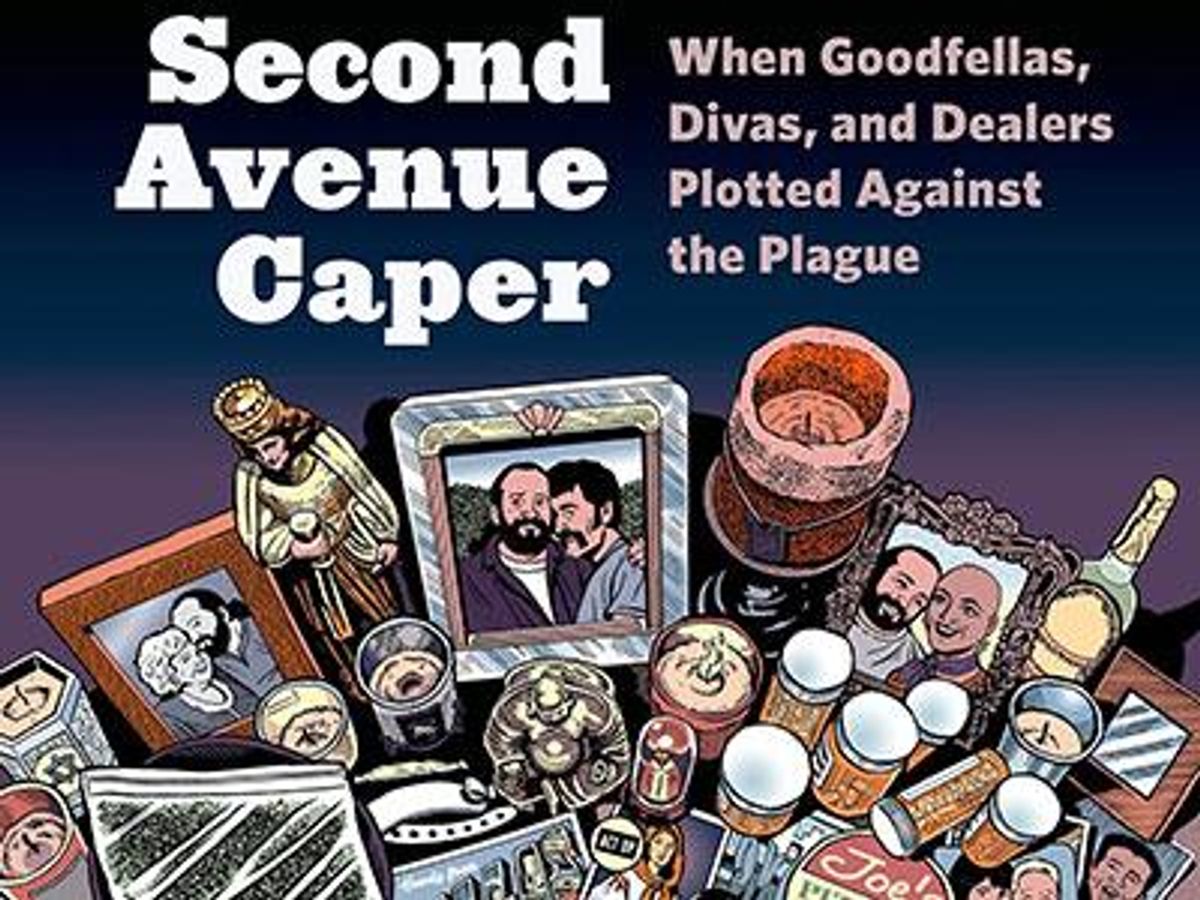Much like The Texas Buyers Club, the graphic memoir, Second Avenue Caper, is the story of a group of desperate people who conspired to obtain medications from Mexico that might fight AIDS-related complications. In the acknowledgements, author Joyce Brabner — a comic book legend who helped create the underground classic American Splendor with her late husband Harvey Pekar — notes that she had always wanted to create a “’gang of misfits’ caper.”
That’s the format Brabner has chosen to tell this true-life story. The conceit, of course, is that this harebrained escapade — to sell pot in order to smuggle illegal medications into the U.S. for desperate people living with AIDS — is anything but frivolous or carefree.
In Second Avenue Caper, Brabner depicts herself using another metaphor for the efforts her friend Ray — a registered nurse at the heart of the narrative — took to combat the disease: that of a war. And if the battle against AIDS in the early 1980s was a war, Ray was on the front lines. (Second Avenue always uses the phrase AIDS, even when speaking about HIV in the present.)
Professionally, Ray, the Cleveland, Ohio, transplant nursed dozens of people in New York who were dying of AIDS (including his first, the 24th documented case of the disease in the U.S.). And personally, the gay nurse cared for dozens of friend as they wasted away. Frustrated by the lack of medication to combat the virus, he risked losing his license and going to jail by selling marijuna and using the proceeds to fund trips to Mexico where he could illegally procure medications like Ribavirin and AZT.
While Second Avenue depicts these actions as heroic, they are simultaneously revealed as futile: when U.S. researchers finally do medical trials with Ribavirin it's shown to offer no benefits. Ray nearly suffers a mental break-down at the news.
By the end of Second Avenue, Ray is a lone survivor. He and his partner Ben (who illustrator Mark Zingarelli depicts as always by Ray’s side) both survived, but their relationship did not. Ray can’t help but lament the millions of lives lost to AIDS worldwide and worry about today's younger generation "riding bareback."
But Brabner is clearly hoping for a more positivie note to end on. She dismisses Ray's negativity as PTSD and “your depression talking,” and urges her old friend (and by extention all survivors) to recall moments of joy. He does and her efforts seem a fitting closure for what is, ultimately, a tragedy that the author has brilliantly disguised as a comedy of errors.











































































